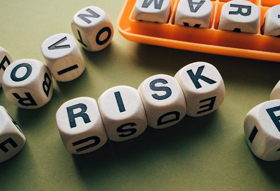
Responsible production and risk management for foam

Responsible production is at the forefront of every manufacturing company - regardless of the sector in which they operate. As foam is made using organic chemical compounds, the industry has a number of safety practices in place to protect the health and wellbeing of employees in factories. With a range of processes and standards - ranging from engineered ventilation systems right to employee training and medical checks - the polyurethane manufacturing industry is, in fact, praised for providing one of the safest 'plant-controlled' jobs.
The manufacture of modern foam means working closely with Isocyanates, which is the group name for a number of highly-reactive chemicals. Mostly used to produce both flexible and rigid foams, they are also powerful irritants - particularly to the respiratory and gastrointestinal tracts. However, its direct contact with skin and eyes can also cause considerable inflammation, meaning that protection from Isocyanates is important for a number of reasons. There have also been a number of reported deaths in individuals exposed to Isocyanates, whereby the chemicals have triggered severe asthma.

There are numerous ways in which manufacturers can help mitigate the risks involved. In the UK, the following of standard health and safety procedures within factory settings almost guarantees that workers will not be intentionally exposed to harmful chemicals and processes along a production line. However, given the high-risk nature of foam manufacture, such factories are often well-equipped with highly-engineered ventilation systems and production and off-loading emergency shut off controls. Stack engineering controls and scrubber technologies are also commonly found in such settings.
Ensuring good ventilation systems is key to reduce the effects brought by Isocyanate fumes. Using incredibly strong exhaust systems, harmful vapours are captured and removed from the production line, ensuring that no more than 1.6 ounces of Isocyanate per ton of polyurethane foam is emitted. By using stack engineering systems, the excess Isocyanate emissions are correctly managed by reacting with relative humidity in the stack, resulting in chemically inactive fumes.
Safety and risk management methods extend beyond manufacturing processes. Employees involved in the production of foam are issued with personal protective equipment (PPE) such as respirators, which help to reduce the number of fumes inhaled by staff. Furthermore, employees are usually provided with goggles, earmuffs and gloves in case they come into accidental direct contact with Isocyanates. However, all employees are appropriately trained and briefed on both the benefits and limitations of PPE and are subsequently aware that PPE is not an effective method of protection on its own.
Training goes hand in hand with PPE and many manufacturers ensure that all employees receive the highest standard of training on a regular basis in order to mitigate safety risks. Ranging from how to work with hazardous materials to how to record information on Safety Data Sheets (SDS) and a Global Harmonisation Systems (GHS), training for employees in the foam manufacturing industry is comprehensive. What is so effective about training in this sector is that it is largely proactive, as all staff are required to inform all delivery staff of safety procedures and guidelines. This is mutually beneficial, as employees are made to ensure that their health and safety knowledge is up to date.
For more information on eFoam's manufacturing and safety procedures, please contact us.

